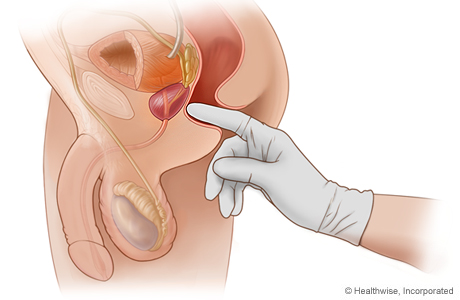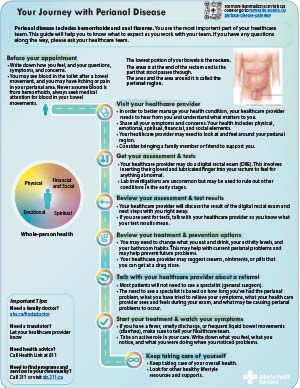In most cases, your healthcare provider will need to look at the affected area and do a physical exam. You may also have tests and assessments to help find the cause of your symptoms and to rule out other health problems. Lab tests are uncommon, but may be used to see how much blood you have lost or to rule out other conditions.
Digital rectal exam
A
digital rectal exam is a common test if you have perianal problems. You do not need to do anything to prepare for this test. You may also need a vaginal exam if the location or cause of bleeding is not clear.
 What should I expect during a digital rectal exam?
What should I expect during a digital rectal exam?
- Your exam will be done in a private room.
- Your healthcare provider will ask you to change in private and then sit or lay on the exam bed. You will be given a gown or sheet to cover yourself.
- Your healthcare provider will describe what they will do during the exam.
- You may be offered a chaperone like a nurse or your support person. You can also let your healthcare provider know if you’d like a chaperone.
- When you are ready and in a comfortable position, your healthcare provider will gently insert a gloved and lubricated finger into your anus. They will feel for anything that may not be normal.
- The exam lasts only a few seconds. When the exam is done, your healthcare provider will discuss the results with you and then leave the room so that you can get dressed in privacy.
- You and your healthcare provider will talk about next steps based on the findings of the exam.
A digital rectal exam is a mildly uncomfortable procedure. During the exam, you might:
- feel the need to pee
- feel like you will have a bowel movement (this will not actually happen)
- have an erection
After the exam
After your exam, you can return to your normal activities right away.
Your healthcare provider will tell you what to watch for and if you should expect mild bleeding. If you have anal fissures or hemorrhoids, mild bleeding after a digital rectal exam is more likely to occur. Contact your healthcare provider if your symptoms get worse, if you have any of the symptoms your healthcare provider told you to watch for, or if you are not getting better in the expected time your healthcare provider shared.

Perianal Disease Pathway
Download or print the
full patient pathway (PDF) and
summary (one-page PDF) to learn more about how to prevent, manage, and treat perianal problems.
Patient Pathway  Summary
Summary 
